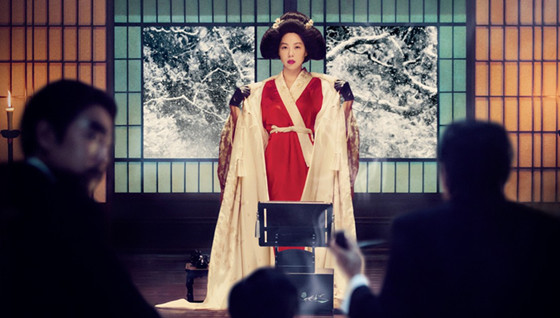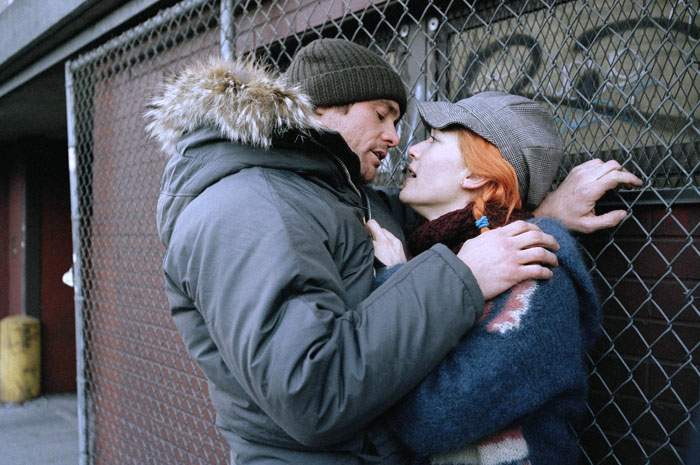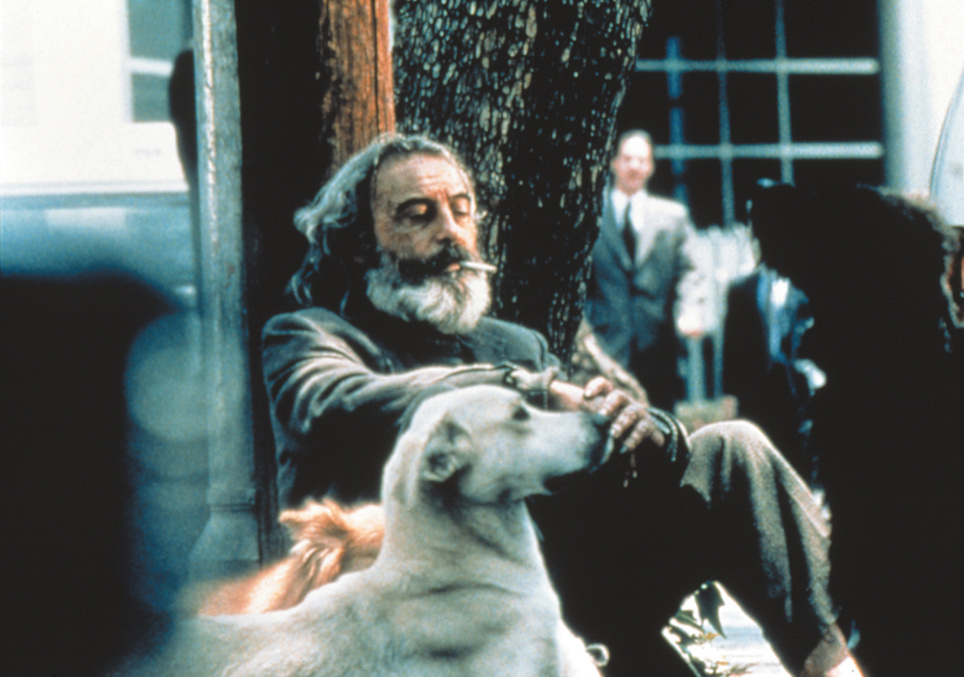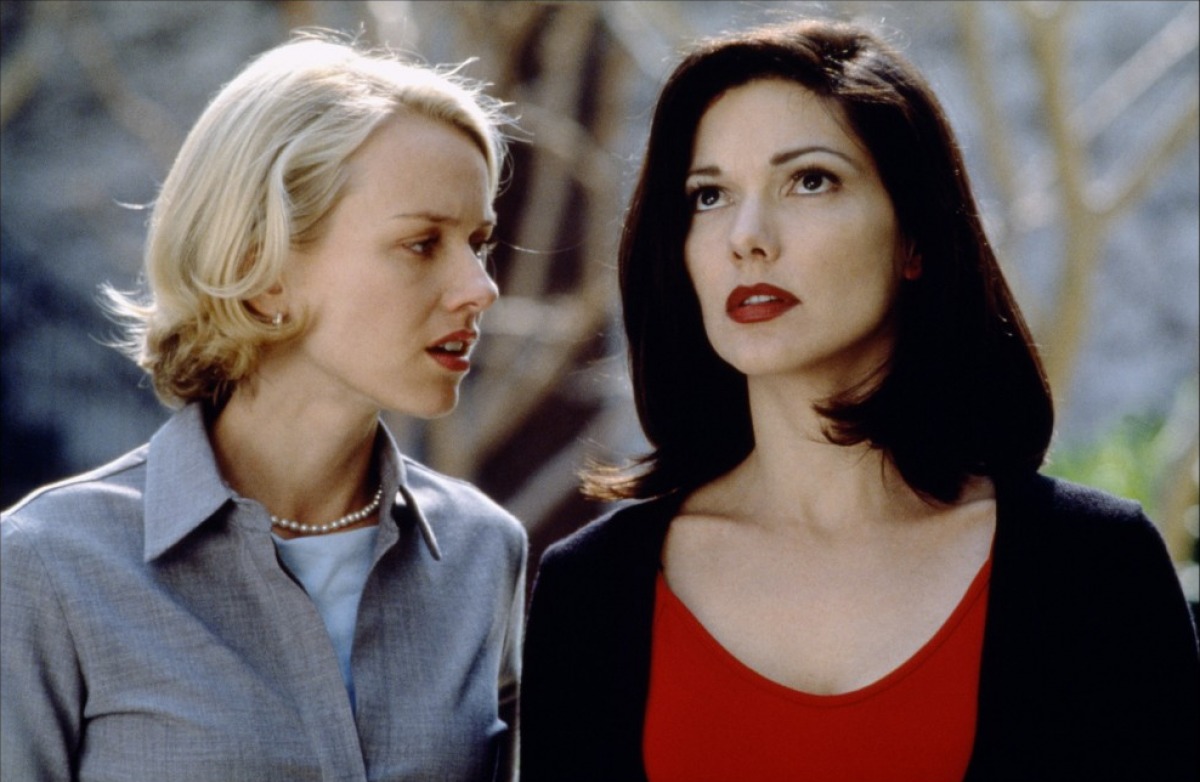5. The Handmaiden (Park Chan-wook)

Korean cinema is one of the strongest cinematic movements of the 21st century. Aside from a company of inspiring directors, it’s especially Park Chan-wook who gained international recognition with his unmistakable aesthetic and visual strength. His works win over his poetic visual storytelling (“Oldboy” and “Stoker” deserve a separate mention here). “The Handmaiden” in 2016 is no exception.
Based on Sarah Waters’s novel “Fingersmith”, the movie tells the story of pickpocket Sook-hee, who is hired as a handmaiden for the heiress Lady Hideko by count Fujiwara (while the novel is set in Victorian-era Britain, the movie plays in Korea under Japanese colonial rule. The dark mansion with its mixture of Japanese and Victorian architecture works as a clever reminiscent to the source material). She should force the unknowing aristocratic to marry the thievish count, who wants to keep her money for himself. But while working, the two women start to discover feelings for each other and start to fight against the evil forces.
During its two and a half hours, the film presents an erotic web of intrigues, abuse and love. The whole illustration is based on the principle of illusion. The count’s revealment of his plans at the movie’s beginning and Lady Hideko’s pornographic readings seem like theatrical performances, perfectly fitting the movie’s shrouded and twisted plot.
The movie is separated into three separate segments. The first two parts focus on the same time period, just from two oppositional perspectives. The third part ties in with these previous events. However, the distinct perspectives of the first two storylines are swapped with a more all-embracing point of view and more focus on the events surrounding the count and his last actions.
4. Eternal Sunshine of the Spotless Mind (Michel Gondry)

“How happy is the blameless vestal’s lot! The world forgetting, by the world forgot. Eternal sunshine of the spotless mind! Each pray’r accepted, and each wish resign’d?”
It doesn’t surprise that nonlinear movies often thematize the human memory. “Eternal Sunshine of the Spotless Mind” is just one (but one of the best) example of that. Illustrating the human memory in a chronological order wouldn’t do justice to its highly volatile and situation-drawn nature. Therefore, nonlinear narratives provide a fitting and interesting possibility to visualize the protagonist’s past from his subjective perspective.
“Eternal Sunshine of the Spotless Mind” narrates the story of Joel, a restrained man who meets the impulsive Clementine, and he is immediately interested in her. After two years of a relationship, they break up and as it turns out, Clementine has erased him from her memory with the help of a specialized doctor. Confronted by her ignorance, he decides to do the same thing.
The film’s nonlinearity helps to blur the line between reality and Joel’s thoughts. To achieve this goals, not simply in the narrative but in the visual layer, the filmmakers used some of the cleverest transitions (and, in fact, a lot of other cinematic instruments such as lightning and visual effects) ever put on screen, illustrating the erratic and selective functioning of human memory while gluing together different scenes, resulting in a seamless stream of fading retrospections.
Some scenes are interesting intellectual games of how memories are affected by conscious or subconscious processes in the human mind; just think of the scenes with Joel and Clementine sitting on a couch while rain starts to fall inside of the house caused by Joel’s intended blending of two memories.
Regarding the film’s innovative character, it’s one of the best romantic dramas of all time as well as a beautiful and heartwarming ode to the frangibility of memory and its existential value.
3. Amores Perros (Alejandro González Iñárritu)

Like “21 Grams” and “Babel”, the first installment of Iñárritu’s trilogy revolves around a life-upsetting event with far-reaching consequences for the film’s protagonists.
The first third concentrates on Octavio and his brother’s wife Susana. Together with the woman’s erratic husband, they life in the mother’s home. In order to win over Susana, Octavio decides to win money at local dog fights. After his initial wins, he has to face differences with a dangerous criminal and his gang.
Caused by a blindfold action of Octavio, he and a friend try to escape the deadly gang members in a car chase, resulting in a horrible crash with several involved people. The second part is about the beautiful model Valeria and her lover, a married publisher. After the car crash, she is confined to a wheelchair and confronted with the loss of her benefits as a top model. The relationship is proved by Valeria’s depression and the man’s doubts regarding his former decisions.
The last third tells the story of El Chivo, half-contract killer, half-estray. After several contactless years, he tries to regain closeness to his daughter. But while he thinks about her every day, she doesn’t even known about his existence.
The movie perfectly links these three story lines with subtle cinematic and narrative details, resulting in a highly entertaining and credible journey à la “Pulp Fiction”. “Amores Perros” is a thought-provoking masterpiece, an incredible debut, and one of the best Mexican movies of all time.
2. Memento (Christopher Nolan)

The early 2000s were the fluorescence of nonlinear narratives in cinema. It seemed like the turn of the millennium arranged for the audience’s will of overcoming straight stories that couldn’t capture the rising complexity of the world marked by globalization (of course there were nonlinear movies in the 20th century with masterpieces like “Pulp Fiction” and “Once Upon a Time in America”, but in the 2000s this narrative style seemed to reach its peak). Instead, movies like “Eternal Sunshine of the Spotless Mind” and especially “Memento” worked as the flagships of modern nonlinear cinema.
Written by Christopher Nolan on the basis of his brother Jonathan Nolan’s short story “Memento Mori”, the movie tells its story in reverse order. Starting with the ending, the film narrates its story with every successional scene being the previous one in the actual chain of events. In addition, some chronological black-and-white scenes shed light on the movie’s pre-story. What might sound confusing is truly a brilliant approach on storytelling.
Suffering from short-term memory loss, Leonard has to face the rape and murder of his wife. In order to reveal the murderer’s identity, his investigations are accompanied by a Polaroid camera and tattoos on his body, working as substitute for his memory.
Regarding the movie’s story, Nolan’s use of nonlinearity isn’t grounded in a will for simple innovation or recognition, but in the golden dogma: form follows function. By the use of the scene’s reverse order, the audience is brilliantly set in the protagonist’s state of perception. The viewer isn’t aware of the previous events as well as Leonard. By that, every supporting character gains a high level of unreliability, caused by the opacity of their goals.
1. Mulholland Drive (David Lynch)

Writing about “Mulholland Drive” equals running the risk of being redundant, regarding the movie’s standout status as one of this millennium’s greatest cinematic achievement (on the BBC’s 2016 list “100 Greatest Films of the 21st Century” the movie took first place). Much has been written about the possible meanings of Lynch’s surrealistic magnum opus and its narrative structure.
What separates this movie from all other contributions to this list is the film’s will for confusion and logic-sparing portrayal. “I don’t know why people expect art to make sense when they accept the fact that life doesn’t make sense.” This quote perfectly sums up the impact of “Mulholland Drive”. At first sight, it doesn’t seem to make sense. One reason for that is definitely its confused narrative structure that interweaves two layers of time, both from reality and from the dream world, into a character-doubling story.
Some scenes seem totally self-sufficient from the movie’s key action, just working as abstractions of the actual story or hints for the “right” analysis. This impenetrable narrative complexity with its infinite interpretations and the director’s denial of delivering the movie’s agenda makes “Mulholland Drive” one of the few true enigmas of cinema.
Honorable Mention: True Detective (Season 1)

Although 2014’s “True Detective” is a TV series and the television format demands some discreet but notable differences in narrative structure compared to a movie, the first season is a masterpiece of nonlinear storytelling, definitely deserving of a mention on this list. In fact, “True Detective” works more as an eight-hour movie instead of a classical TV show.
The series is a haunting tour-de-force, leading through the darkest abysses of human existence and the shady sides of southern Louisiana. In the manner of “Se7en” or “The Silence Of The Lambs”, the series follows detectives Martin Hart and Rustin Cohle (the work of Woody Harrelson and Matthew McConaughey are arguably the best performances ever seen on television) who have to solve the ritual murder of a young woman, while they face their poisoned private lives. During their investigations they are confronted with the dark sides of prostitution, occult clans, religion, abuse and incest.
The series offered some of the most cinematic scenes of TV history with a six-minute single take tracking shot being the series technical crown jewel. Another scene that deserves a special mention is the third episode’s end – making a wooden cabin and a half-naked guy in underpants with a gas mask walking in pea green grass in broad daylight a moment of pure trepidation is an impressive demonstration of the filmmaker’s cinematic skills.
The narrative extends over three different time periods, spanning 17 years. The first period tells the series’ backstory, reaching from 1995 to 2002. This narration is accompanied by two separate police questionings, taking place in 2012. Working as voiceover and graphics material alike, this second period seamlessly guides through the backstories with its numerous leaps in time, while revealing the protagonist’s character and their individual process or non-process from 1995 to 2012. In the season’s sixth episode, the first two mentioned periods come to an end while the series continues in the present.
With the narrative starting to evolve into a highly complex cobweb of crime and evidence, the viewer is pulled deeper and deeper into the opaque investigations of the series’ protagonists. And like in life, at the end there are as many open-ended questions as there are answers surrounding the sinister events of Carcosa.
Author Bio: Berlin-based Luc Hinrichsen has a bachelor’s degree in audio engineering and plenty of experience in scoring movies on his own, while working for a film distribution company. Besides that, he’s an aspiring screenwriter and director always curious about enlarging his knowledge about film and its history.